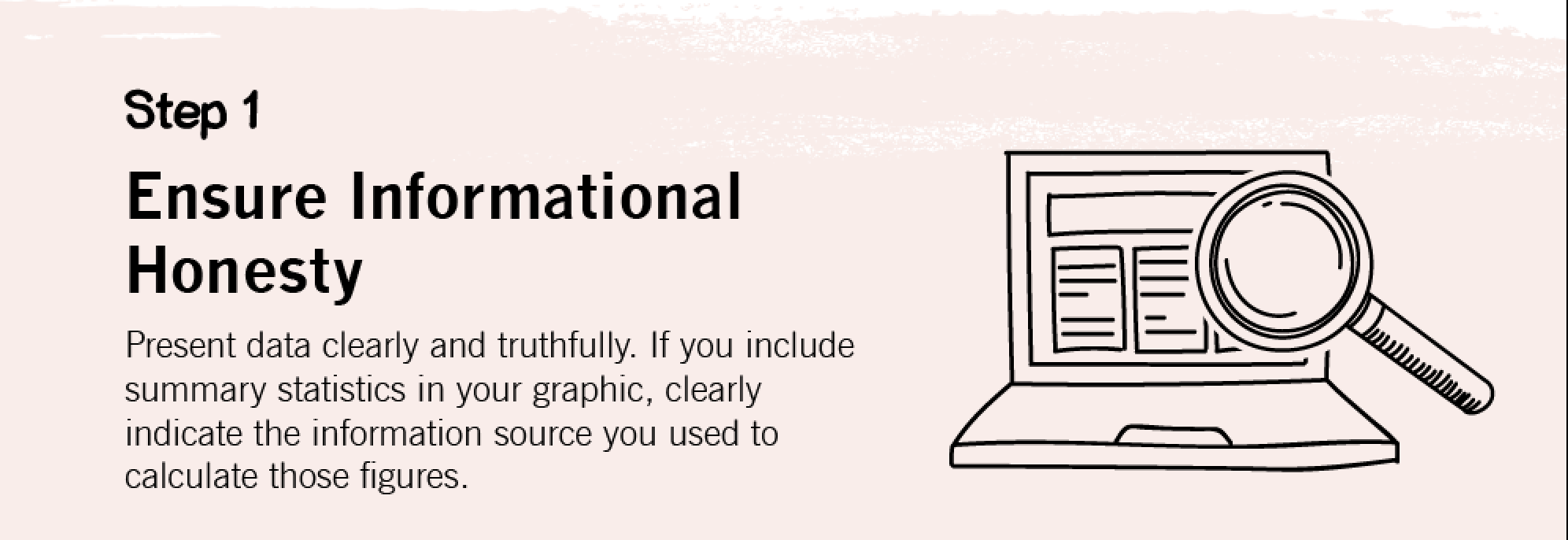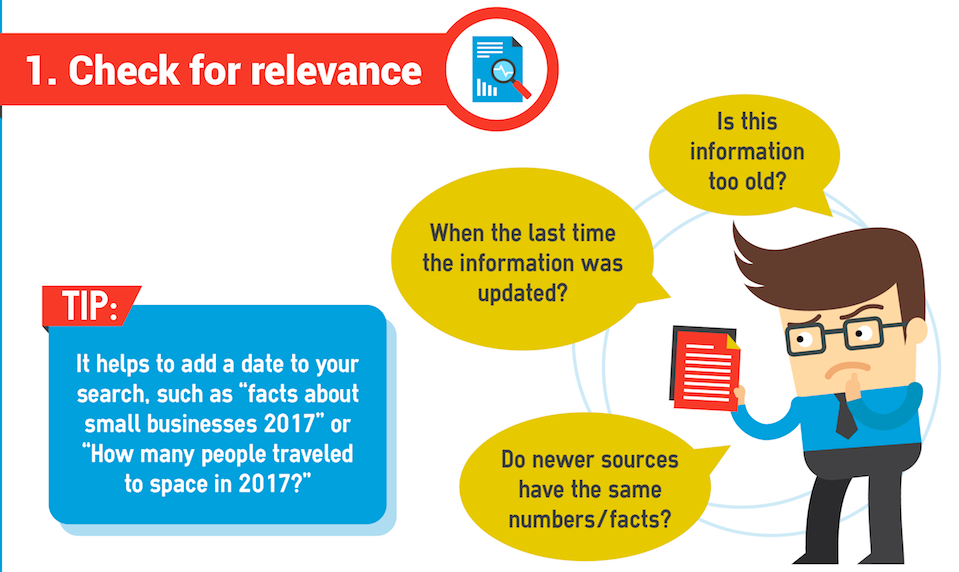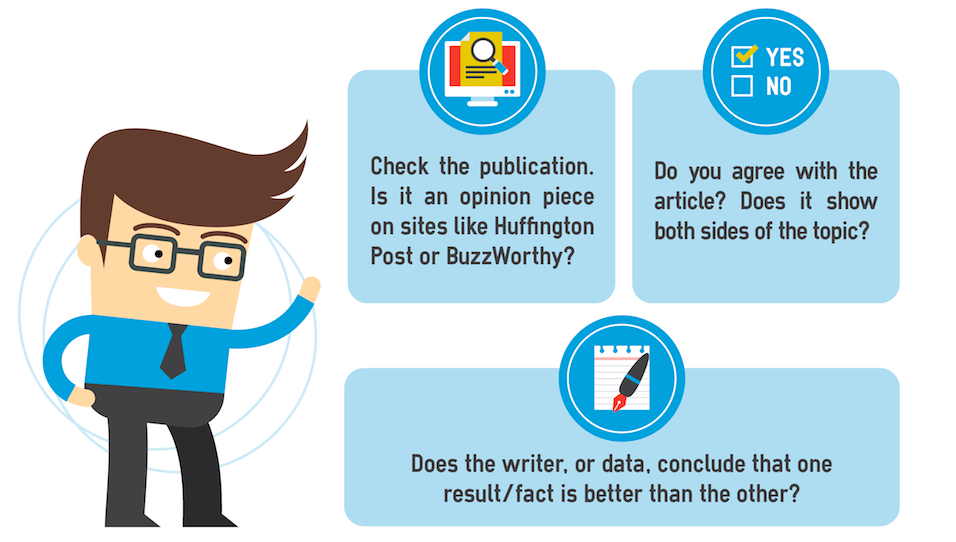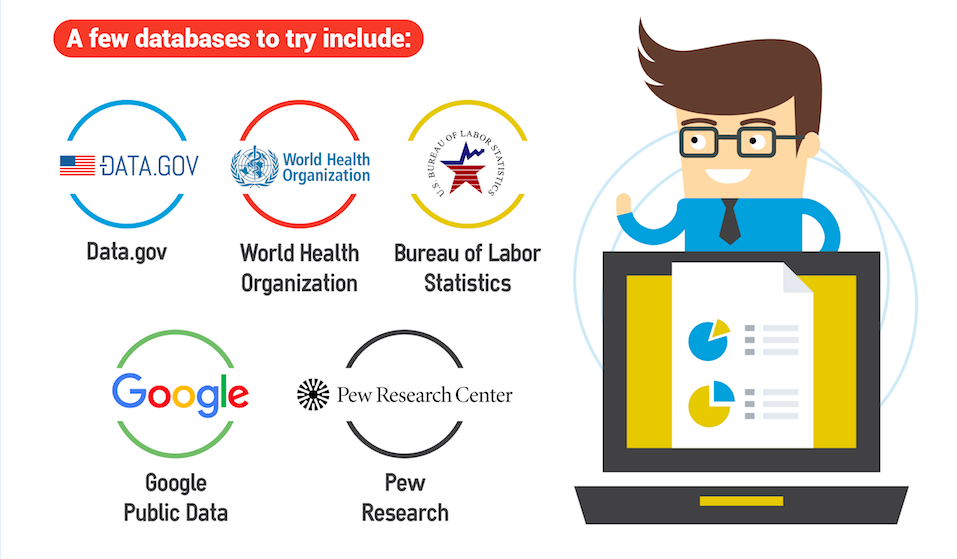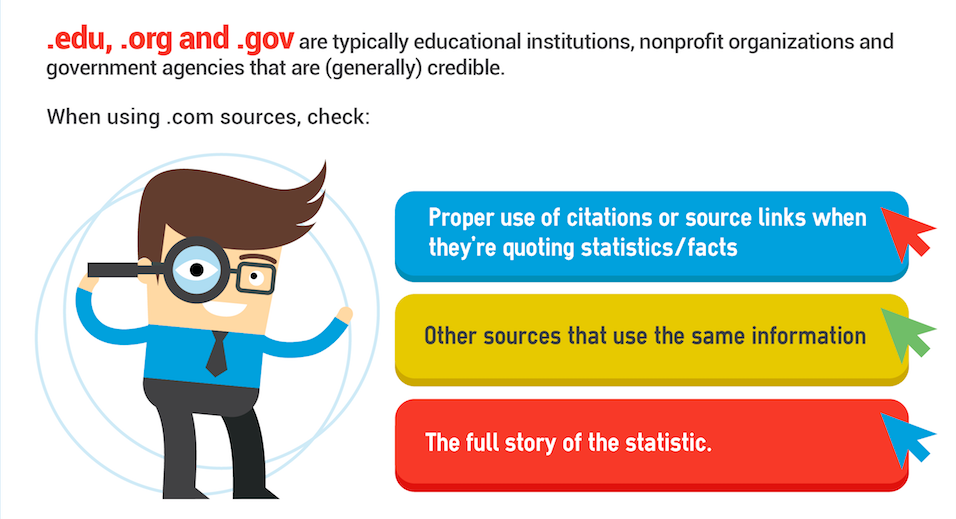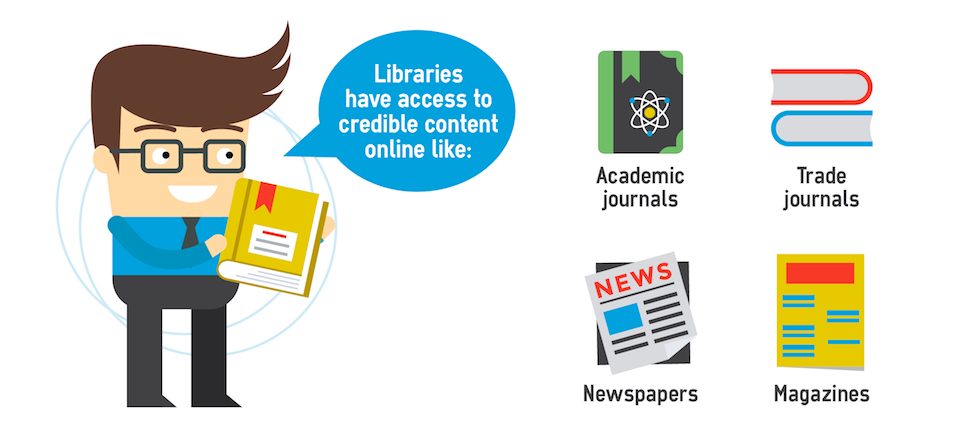Trying to create a compelling infographic but struggling to find reliable information?
In today’s world, information found on the internet is not necessarily vetted for accuracy or even its level of objectivity.
In fact, information found in mainstream search or on social media may be biased, even though its facts and statistics are typically checked for relevance and reliability.
Whether you are a student trying to find reliable sources or a marketer looking for good information, you will need to be able to collect reliable information for your infographic (and any content you create). This way, you’ll create a highly successful infographic.
6 steps to nailing your infographic research
1. Check for relevance.
Check the date. This will let you know whether or not the information you are putting together is up to date and worthy of your readers’ valuable attention. Check the dates on the source articles and see how far back any statistics go.
As a general rule of thumb, many organizations don’t use sources older than five years. That’s because so much can change in today’s online world, so it’s important to have the most up-to-date information.
2. Check the intent.
Understanding the intentions of the source information you are reviewing is vital. Ask yourself who the information was intended for and what their purpose was with writing it. If the purpose was to persuade the audience to take action or to think in a specific way, be wary about using that information to craft your infographic.
To test the intent behind an article or piece of information:
While you can still use statistics from an article that is highly biased, it’s important to fact check that information against other sites to make sure it’s accurate.
3. Check for opinion versus fact.
If you want to post reliable information, it is vital that the information you research is factual and not someone’s opinion. That’s why we highly recommend using databases rather than random internet sources for your article. If you’re not sure which databases to use, check out our suggested list of data sources here.
4. Check the source links.
A simple way to check the validity of information on the internet is to check the extensions of links. For example, .edu, .org and .gov are typically educational institutions, nonprofit organizations and government agencies that are (generally) credible. For-profit, commercial .com links can indicate other potential red flags in the reliability of the information.
5. Check for accuracy.
If you want to verify whether or not your information is trustworthy, it is vital that you check your source against others. If the information you are collecting can be checked against other sources, has been reviewed by a third party and has correct grammar and spelling, there is a good chance that it is accurate and factual information. If you’ve found the information in more than one place and you’ve checked the source for reliability, it’s probably safe to use!
To check sources for accuracy:
- Take key points from their article and search for it on Google. You can take pieces of the article, like “65% of people are visual learners,” and see what pops up. If more sources (hopefully .edu, .org or .gov) use that same data, it’s accurate.
- Follow links to the original source if available to make sure you get the data/facts from the original source.
- Make sure the website or article uses the actual source of the information. If they’re pulling out statistics without citing them, don’t use that information.
Most of all, if something seems too good to believe, it probably is. Do more research to refine the results and make sure that the numbers or facts you’ve found actually work.
6. Go old school.
The library is a great place to find data and information that is vetted and reliable. Just make sure that you use sources that are “timeless” or that are up-to-date. Resources and databases are also available online from most libraries, so you can research from home (or anywhere).
Most of these can’t be found for free online, but you can access them for free with your library card. Ask a librarian about your research and the type of sources you’re looking for; they’ll be happy to help!
Conclusion
Everyone using information from the internet must be aware of its reliability before using it to create an infographic. The information should be objective and accurate as well as easy to cross-reference to other sources.
Ready to make your first infographic? If you or your team are about to get started with infographic creation, you can:
1. hire an infographic designer to do the heavy lifting for you
2. you can go the DIY route through our simple infographic maker
Whichever option you prefer, make sure to check a variety of sources before selecting any information for your infographic, and use the steps above to ensure that you create an infographic that is both compelling and trustworthy.
